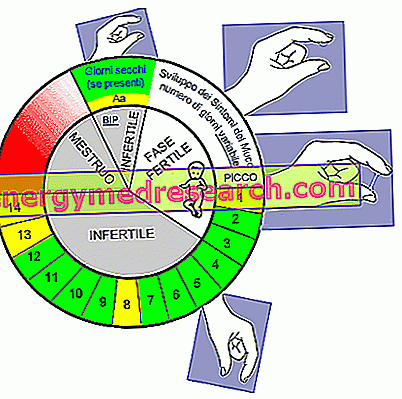
What is Vidaza?
Vidaza is a powder for preparing an injectable suspension. The active substance it contains is azacitidine.
What is Vidaza for?
Vidaza is indicated for the treatment of adult patients with the diseases listed below and who cannot undergo bone marrow transplantation:
- myelodysplastic syndromes, or a group of diseases for which the bone marrow produces an insufficient number of blood globules. In some cases these syndromes can lead to the development of acute myeloid leukemia (AML), a type of cancer that affects particular white blood cells, the myeloid cells. Vidaza is used in patients with intermediate to high risk of developing AML or death;
- chronic myelomonocytic leukemia (CMML), a type of cancer that affects particular white blood cells, monocytes. Vidaza is used when the bone marrow is composed of 10-29% abnormal cells and does not produce a sufficient number of white blood cells;
- LMA following myelodysplastic syndrome. Vidaza is used only if the bone marrow is composed of 20-30% of abnormal cells.
As the number of patients suffering from these diseases is low, these diseases are considered rare and therefore Vidaza was designated an "orphan medicine" (a medicine used for rare diseases) on 6 February 2002 for myelodysplastic syndromes and on 29 November 2007 for the AML . At the time of this designation the LMMC was classified among myelodysplastic syndromes.
The medicine can only be obtained with a prescription.
How is Vidaza used?
Treatment with Vidaza should be started and monitored under the supervision of a doctor with experience in chemotherapy. Before starting treatment with Vidaza, patients should be given medicines against nausea and vomiting.
The recommended starting dose of Vidaza is 75 mg per square meter of body surface area (calculated based on the patient's weight and height) and is given by subcutaneous injection in the upper arm, thigh or abdomen each day for a week, followed by three weeks without treatment. This four-week period constitutes a "cycle". Treatment continues for at least six cycles and then until the patient continues to take advantage of it. Before each
cycle livers, kidneys and blood should be checked. If the blood counts fall to values that are too low or if the patient has kidney problems, the subsequent treatment will be delayed or conducted at a reduced dose. Patients with severe liver problems should be carefully monitored for possible side effects; in any case, Vidaza should not be used in patients with advanced liver cancer.
For all the details, see the Summary of Product Characteristics included in the EPAR.
How does Vidaza work?
The active ingredient in Vidaza, azacitidine, is a drug of the "antimetabolites" class. Azacitidine is an analogue of cytidine; this means that it is incorporated into the genetic material of the cells (RNA and DNA). It is thought to act by modifying the way the cell activates and deactivates genes and also by interfering with the production of new RNA and DNA. These interventions are believed to correct the problems of maturation and growth of new blood cells in the bone marrow that cause myelodysplastic syndromes and kill cancer cells in cases of leukemia.
What studies have been carried out on Vidaza?
The effects of Vidaza were first tested in experimental models before being studied in humans.
Vidaza was the subject of a single main study involving 358 adults with intermediate-to-high risk myelodysplastic syndrome, LMMC or AML who were unlikely to undergo bone marrow transplantation. The bone marrow of these patients contained 10-29% of abnormal cells, with not very high numbers of white blood cells. The study compared Vidaza with respect to conventional therapies (individually chosen treatment based on local practices and the patient's illness). All patients also received the "best supportive care" (ie drugs or treatments that help the patient, such as antibiotics, painkillers and transfusions); some patients have also been treated with other anticancer drugs, such as cytarabine with or without anthracycline. The main measure of effectiveness was the period of patient survival. The study lasted 44 months.
What benefit has Vidaza shown during the studies?
Vidaza has proved more effective than traditional treatments in prolonging survival. Patients treated with Vidaza survived for an average of 24.5 months, compared with 15 months for patients treated with conventional care. The effects of Vidaza are similar for all three diseases.
What is the risk associated with Vidaza?
The most common side effects of Vidaza (seen in over 60% of treated patients) are blood-level reactions including thrombocytopenia (low platelet counts), neutropenia (low levels of neutrophils, a type of white blood cell) and leukopenia (low counts of white blood cells), side effects affecting the stomach and intestines, including nausea and vomiting, and reactions at the injection site. For the full list of all side effects reported with Vidaza, see the Package Leaflet.
Vidaza should not be used in patients who may be hypersensitive (allergic) to azacitidine or any of the other ingredients. Vidaza cannot be used in patients with advanced liver cancer or breast-feeding women.
Why has Vidaza been approved?
The Committee for Medicinal Products for Human Use (CHMP) decided that Vidaza's benefits are greater than its risks in the treatment of adult patients who are not suitable for hematopoietic stem cell transplantation with myelodysplastic syndromes at intermediate risk 2 and high, LMMC with 10 -29% of abnormal blasts without myeloproliferative disorder or AML with 20-30% blasts and multilineage dysplasia. The committee recommended the granting of the marketing authorization for Vidaza.
Other information about Vidaza:
On 17 December 2008, the European Commission granted a marketing authorization valid for Vidaza, valid throughout the European Union, to Celgene Europe Ltd.
For the registration of the designation of Vidaza as an orphan medicine here (myelodysplastic syndromes) and here (LMA).
For the full EPAR version of Vidaza, click here.
Last update of this summary: 11-2008.



